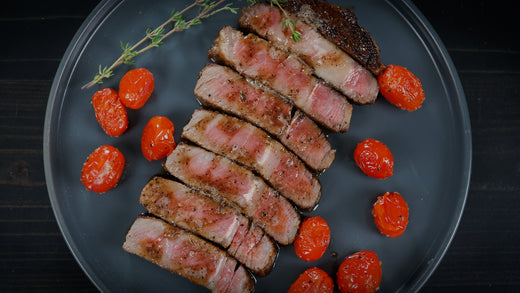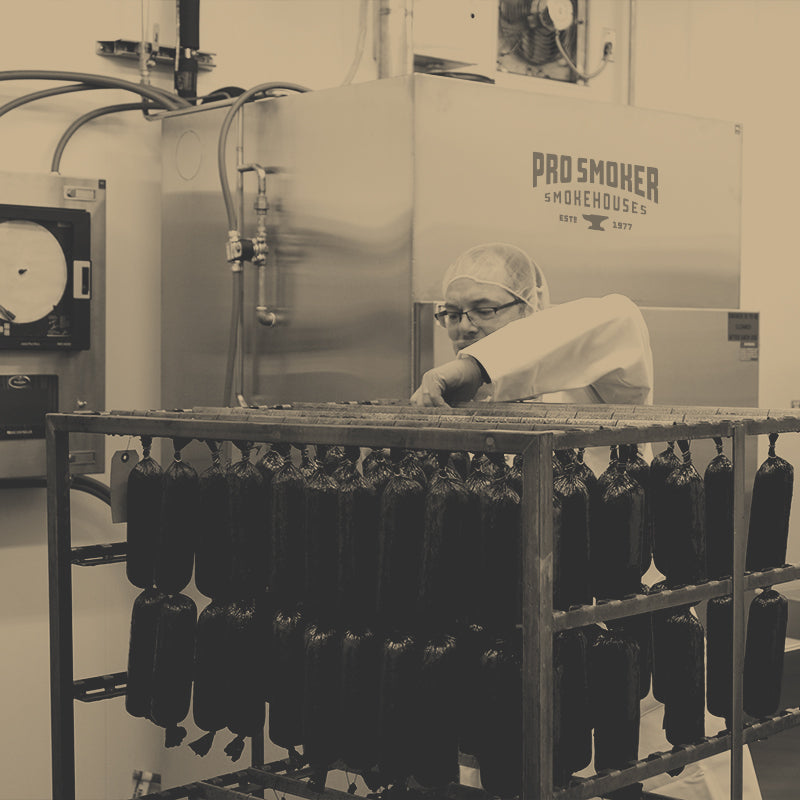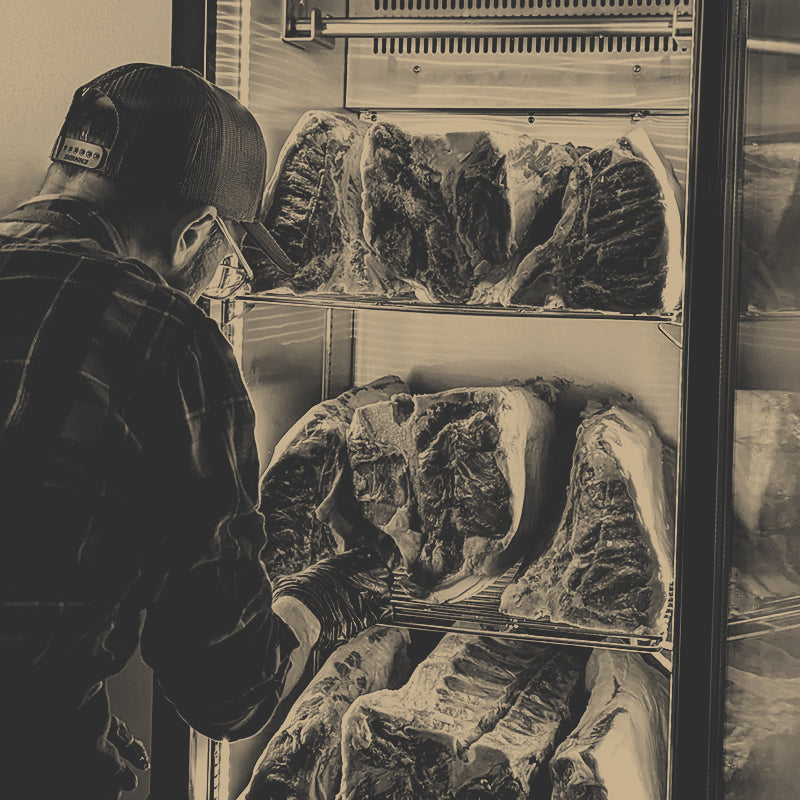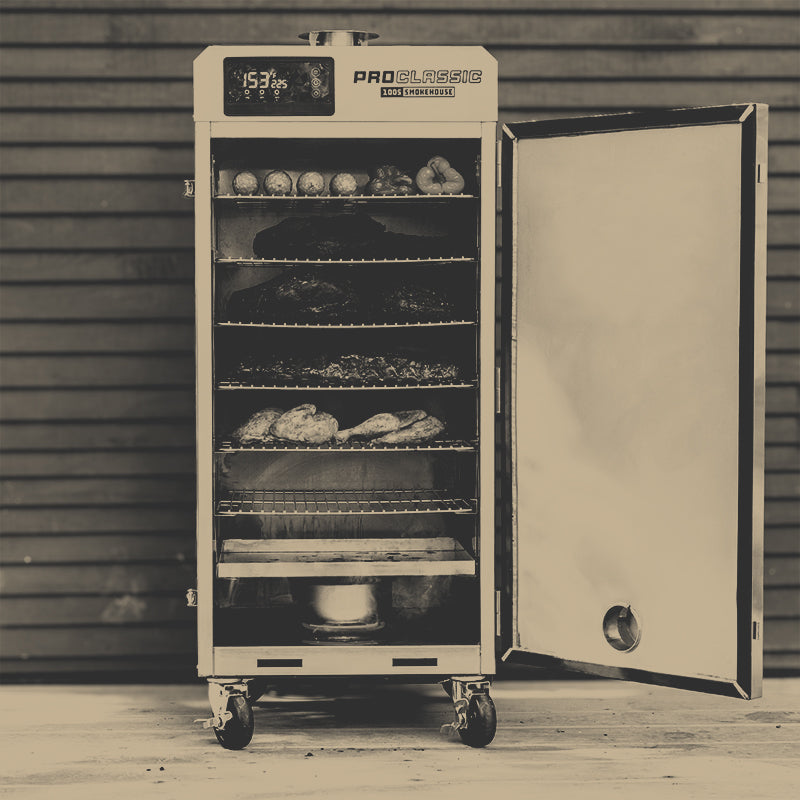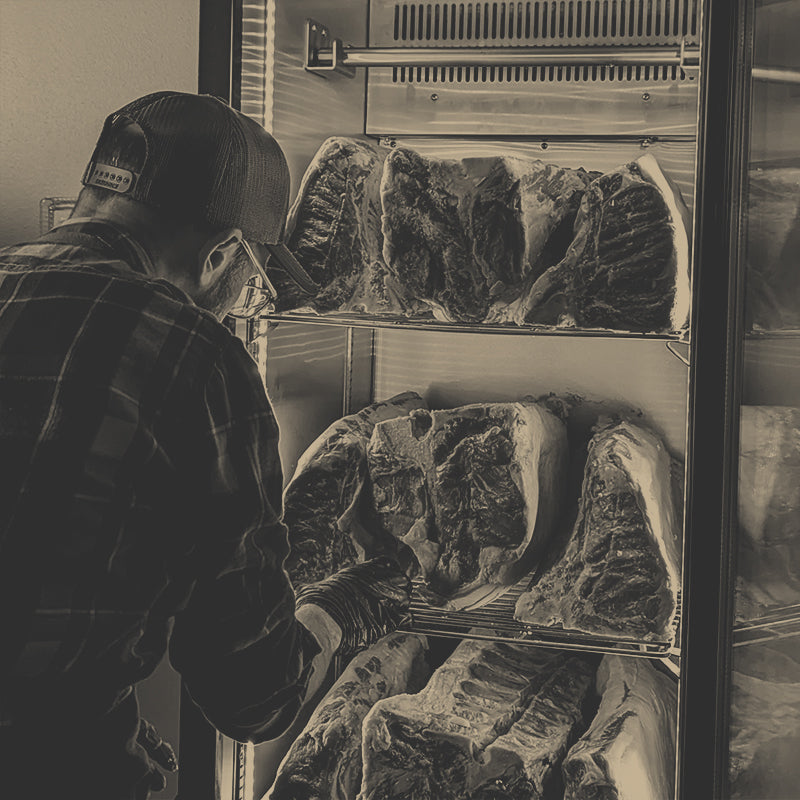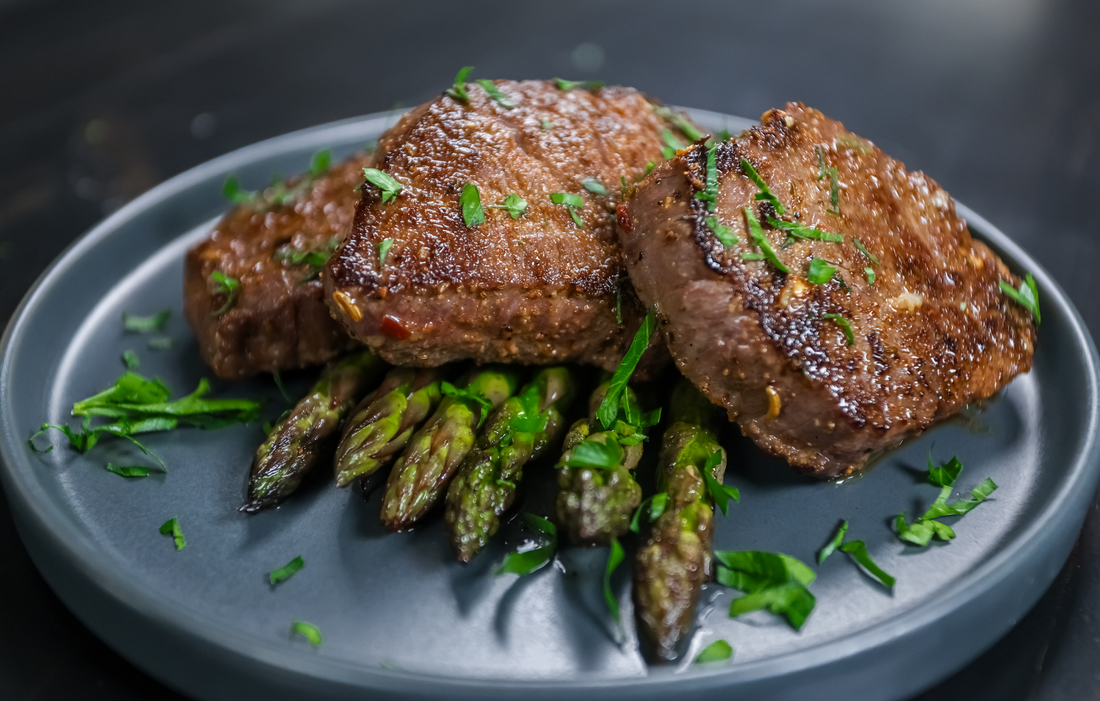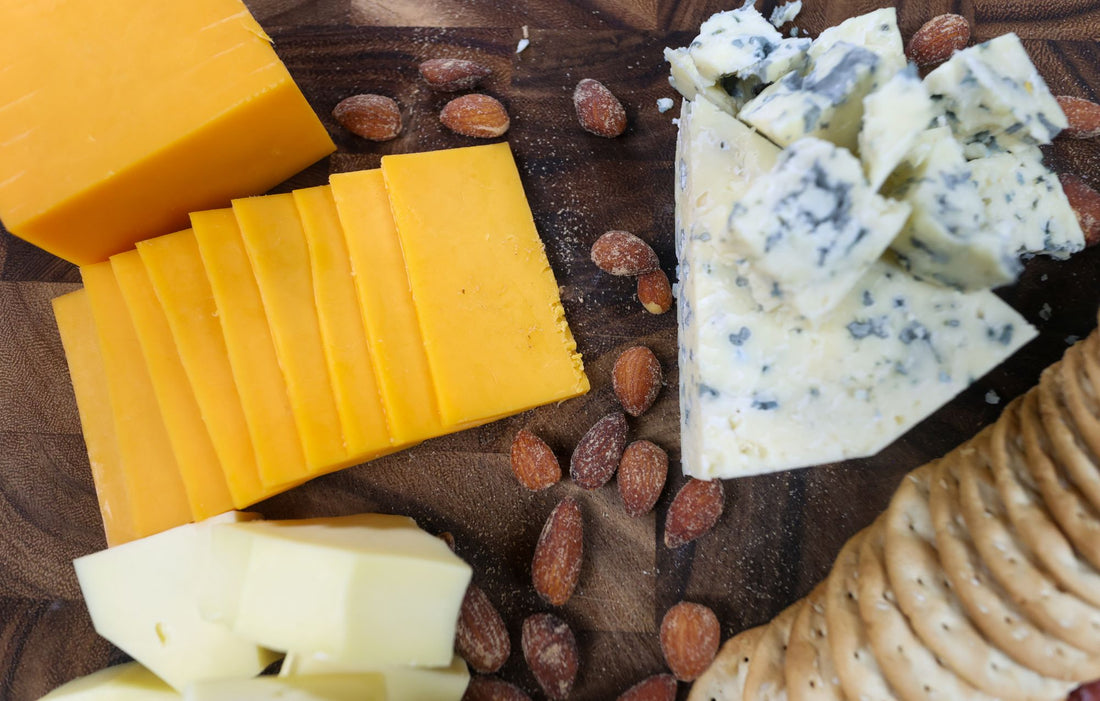
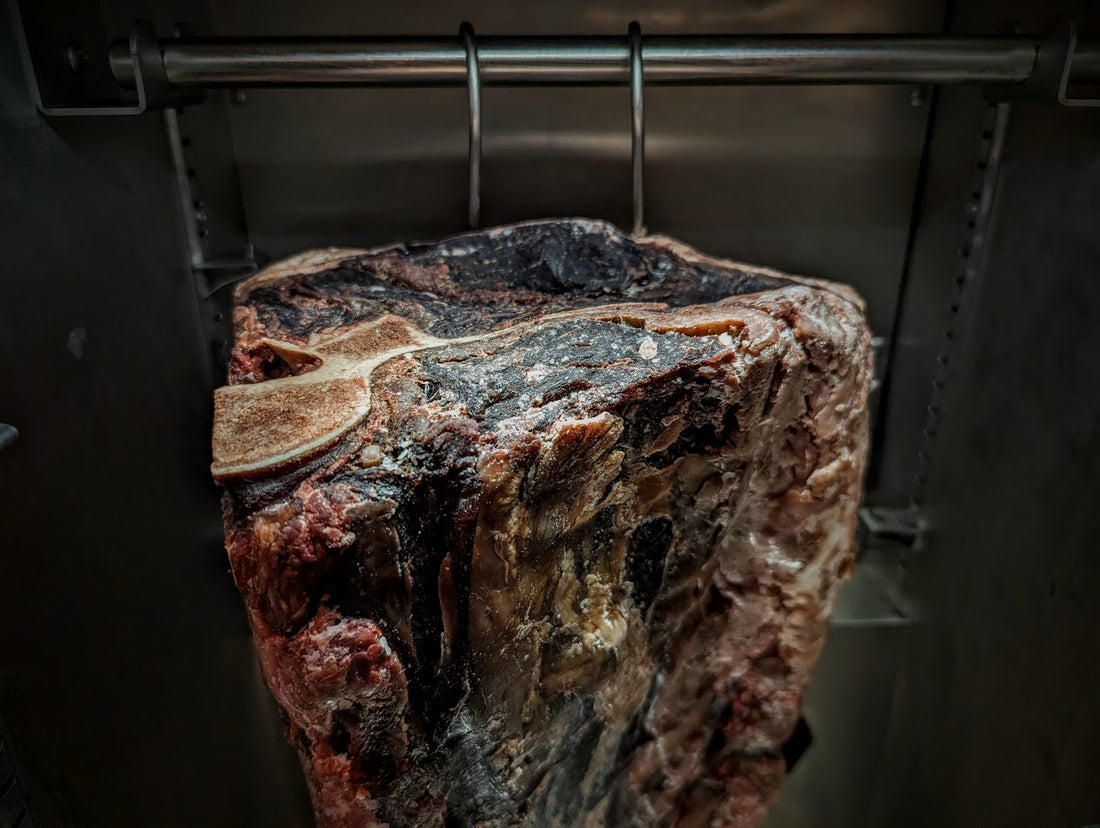
Dry Aging 101
Dry Aged Steak - ROI Calculator
The Sizzle of Success: Unveiling the ROI of a Butcher Shop's In-House Dry Aged Steaks
In the world of gastronomy, the art of dry aging beef is considered a culinary masterpiece. The process involves carefully storing cuts of beef in a controlled environment, where they undergo natural enzymatic reactions that enhance flavor, tenderness, and overall quality. While dry aged steaks have long been a favorite in expensive steak houses, they often come at a premium price. But what if a butcher shop could not only provide these sought-after cuts but also reap a substantial return on investment? Enter the Reserve300 Dry Ager – a game-changer for butcher shops looking to offer dry aged steaks in-house.
The Appliance: Reserve 300 Dry Ager The Reserve 300 Dry Ager is designed to hold up to 286 lbs of meat at a time. With a precisely controlled environment, it allows butchers to curate the perfect conditions for dry aging, resulting in tender, flavorful steaks. Its innovative technology empowers butcher shops to venture into the world of dry aging with confidence, transforming the way they do business.
The Numbers Behind the Investment A butcher shop investing in the Reserve 300 Dry Ager is embarking on a journey that leads to premium dry aged steaks. Fresh steaks typically cost around $12 per pound, whereas dry aged steaks command a staggering $30 per pound due to their enhanced taste and texture.

Dry aging, however, comes with certain caveats. During the aging process, moisture is lost from the meat and some trimming is required, resulting in a weight loss of approximately 15-20%. Despite this, the allure of $30 per pound dry aged steaks is compelling.

Breaking Down the ROI With a four-week drying cycle, butcher shops can produce 28-day dry aged steaks that are sure to tantalize taste buds. To analyze the ROI, let's consider the following scenario:
-
Initial Investment:
- Cost of Reserve300 Dry Ager
- Additional costs (setup, maintenance, etc.)
-
Profit Generation:
- Revenue from selling dry aged steaks ($30 per pound)
- Deduct the cost of fresh steaks ($12 per pound)
- Adjust for weight loss and trimming
The Path to Profit: After the initial investment, the butcher shop must age enough meat to recover its costs. With an estimated 15-20% loss due to aging and trimming, it would require approximately 1.3 cycles of dry aging to break even. This translates to roughly 8 weeks – a relatively short period considering the potential return.

Taste the Success: Following this break-even point, each subsequent cycle of dry aging becomes a profit-generating endeavor. The quality of the dry aged steaks, coupled with the higher price point, sets the stage for a lucrative venture. By the end of the second cycle (around 16 weeks), the butcher shop can expect to see substantial profits.
Beyond Profit: While the financial aspect is certainly enticing, the Reserve300 Dry Ager brings more to the table. It empowers butcher shops to elevate their brand, attract a more discerning customer base, and establish themselves as purveyors of fine meats. The investment not only yields financial gain but also enhances the shop's reputation and standing in the culinary community.
In Conclusion: The Reserve300 Dry Ager presents a tantalizing opportunity for butcher shops to delve into the world of dry aging and offer premium, sought-after dry aged steaks. With an initial period of around 8 weeks to break even and a subsequent period of around 16 weeks to start reaping profits, this investment can be a culinary and financial triumph. As the aroma of succulent, perfectly aged steaks fills the air, butcher shops can savor the sizzle of success brought about by the Reserve300 Dry Ager.
So, why wait? Get in touch with the Pro Smoker Sales Team today and let the journey towards a sizzling ROI and mouthwatering dry aged steaks begin!
Tags
Dry Ager Blog, Dry Aging TipsDry Aged Steak - ROI Calculator
The Reserve
Dry Ager Tips. Recipes, & More

